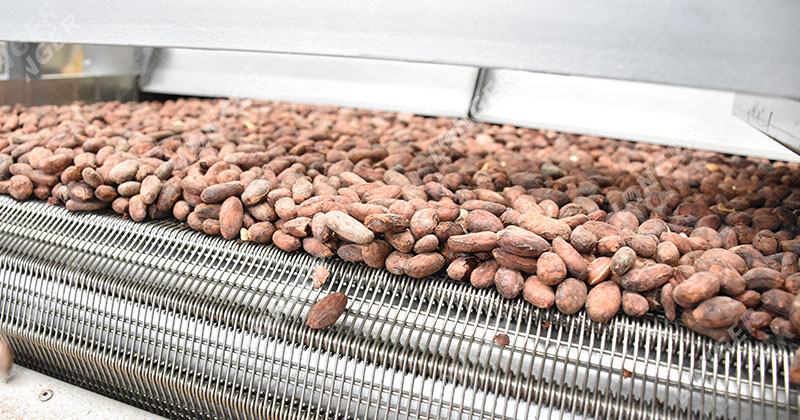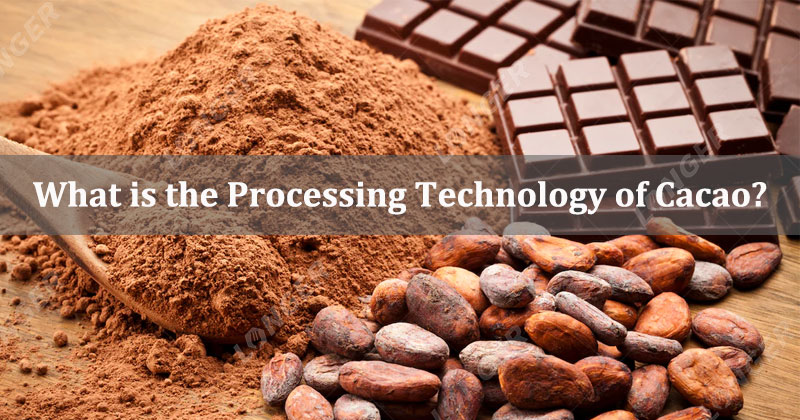Cacao, the key ingredient in the production of chocolate, undergoes a fascinating journey from its cultivation to the creation of exquisite treats. So, what is the processing technology of cacao? In this article, we will delve into the captivating world of cacao processing, exploring the essential steps involved in transforming the humble cacao bean into the delectable chocolate bars we love.
1. Harvesting and Fermentation:
The cacao processing journey begins with the harvest. Cacao trees bear large pods, each containing a cluster of cacao beans. Once the pods ripen, they are carefully hand-picked to avoid damaging the delicate beans inside. After harvest, the pods are opened, and the beans, coated with a sweet pulp, are extracted.
The next critical step is fermentation. The extracted beans, along with the pulp, are placed in shallow containers or heaps and covered with banana leaves or other materials. Fermentation triggers a complex biochemical process, involving the conversion of sugars into alcohol and eventually acetic acid. This fermentation process enhances the flavor, aroma, and color of the cacao beans while reducing their bitterness.
2. Drying:
Following fermentation, the beans undergo drying to reduce their moisture content. Traditionally, they are spread out on mats or trays and left to dry under the sun. This process typically takes several days, and it is essential to ensure consistent airflow and prevent the growth of mold.
Modern cacao processing facilities may employ specialized drying equipment, such as large drying beds or mechanical dryers, to control temperature and humidity levels. Proper drying is crucial as it helps stabilize the beans, prevents spoilage, and prepares them for the subsequent processing steps.
3. Roasting:
Once dried, the cacao beans are ready for roasting. Roasting is a critical stage that brings out the characteristic flavors and aromas of chocolate. The beans are placed in cocoa roasting machines, where they are subjected to controlled heat. The duration and temperature of roasting can vary, depending on the desired flavor profile.
Roasting facilitates the breakdown of complex compounds and the development of rich flavors, transforming the raw cacao into the familiar cocoa aroma. Additionally, the roasting process helps to separate the thin shell from the inner kernel, known as the nib.

4. Grinding and Conching:
After roasting, the beans are cooled and winnowed to remove the shells, leaving behind the precious cocoa nibs. These nibs are then ground into a paste called cocoa mass or cocoa liquor. This grinding process can be done using modern grinding machines.
To further refine the texture and flavor, the cocoa mass undergoes a process known as conching. Conching involves kneading and agitating the cocoa mass for an extended period, typically at elevated temperatures. This step helps to smooth out any remaining coarse particles, reduce acidity, and refine the flavors, resulting in a silky and well-rounded chocolate.
(If you want to produce cocoa powder instead of chocolate, from the grinding process, it will involve oil extraction, powder grinding, etc. See Cocoa Powder Processing Machine for more information.)
5. Additional Processing Steps:
Once the conching process is complete, the chocolate mass can be further processed based on the desired chocolate products. Additional ingredients like sugar, milk powder, and cocoa butter may be added to create different types of chocolate, such as milk chocolate, white chocolate, or dark chocolate.
The refined chocolate mass is then tempered, a process of carefully heating and cooling the chocolate to stabilize the cocoa butter crystals, giving the final product a glossy appearance and a satisfying snap when bitten into. Finally, the tempered chocolate is molded into bars, truffles, or other desired forms before being packaged for distribution.
Conclusion:
The art of cacao processing is a harmonious blend of traditional techniques and modern technology, showcasing the dedication and craftsmanship involved in creating fine chocolate. From the careful harvesting and fermentation of the cacao beans to the precise roasting, grinding, and conching processes, each step contributes to the rich flavors and textures that make chocolate a beloved treat worldwide.
